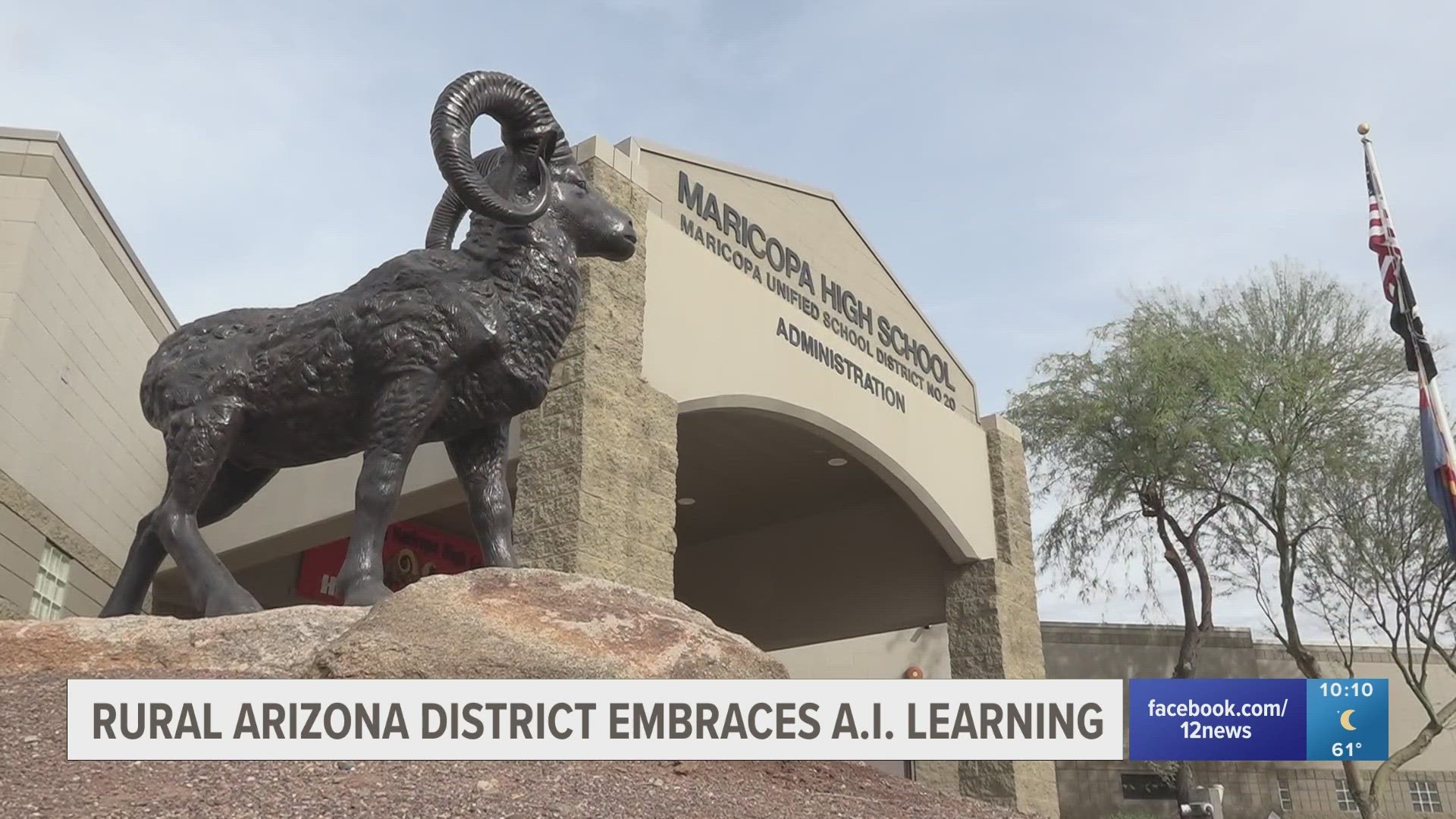MARICOPA, Ariz. — Art students mold clay figurines derived from A.I. prompts. Graphic design students create t-shirts based on specifications from a fictional company generated by A.I. Math students rely on an A.I. program for tutoring.
They are all examples of how students at Maricopa High School are integrating A.I. technology into their daily work. As school leaders across the state adapt to a new era of learning, the Maricopa Unified School District, located south of metro Phoenix, is moving aggressively to adapt.
“We need to embrace it but we need some parameters,” said Christine Dickinson, technology director of the district.
The district is holding an A.I information session with families on Wednesday, Nov. 29, in order to discuss academic integrity, privacy and curriculums. The school is also seeking feedback from parents to create written A.I. guidelines. Educational leaders said all school districts should consider taking similar measures.
“I think it’s important to know it’s here to stay. We cannot block this from happening. We need to embrace these technologies as they change our daily lives,” Dickinson said.
An explosion in A.I. technology since November 2022 has spawned hundreds of websites that generate written content and images based on the user’s requests. The technology poses new challenges for educators who are trying to shape existing curriculums while maintaining academic integrity. The Arizona Department of Education recommends school districts take cues from the U.S. Department of Education guide, Artificial Intelligence and the Future of Teaching and Learning.
“We must address both anticipated risks and the possibility of unintended consequences,” the guide states.
The guide describes “two broad shifts from today’s use of technology in schools”:
- a transition from merely capturing data to detecting patterns in data
- a transition from merely providing access to instructional resources to automating decisions about teaching and learning processes.
The department said computer users have greater responsibility to understand how bias and unfairness may result from A.I. systems. The department also emphasizes the need for teachers to remain involved in the educational process.
“We reject the notion of A.I. as replacing teachers,” the guide states. It recommends that educators begin ongoing discussions with families.
“Educational leaders must prioritize informing and involving educational constituents so they are prepared to investigate how and when A.I. fits specific teaching and learning needs,” the guide states.
The department says A.I. “brings powerful opportunities to address education policy priorities” and predicts A.I. will enhance learning opportunities for students with learning differences and language barriers.

